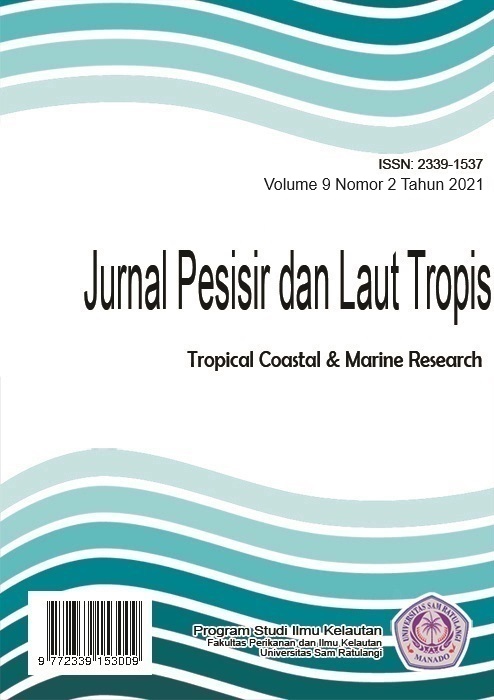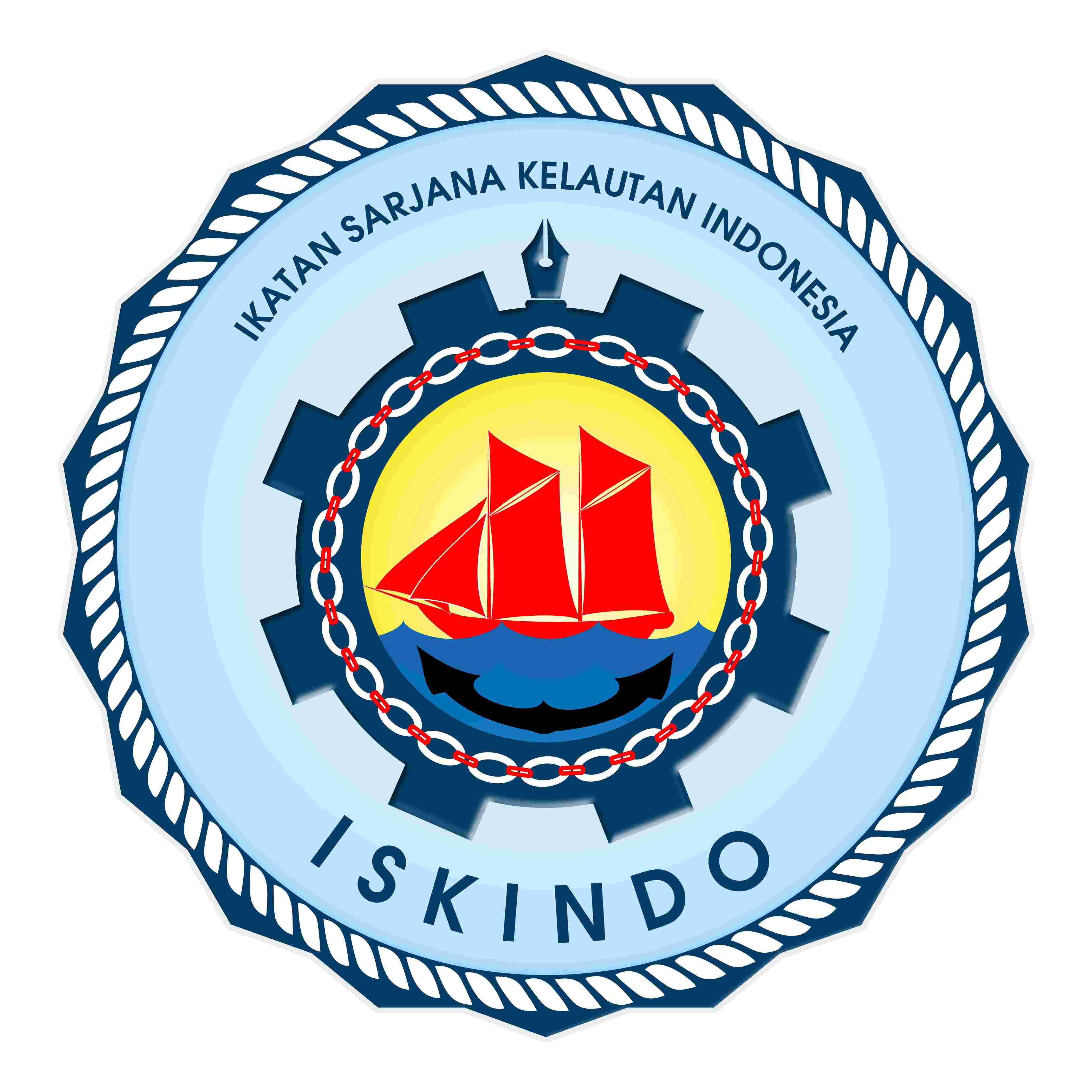IDENTIFIKASI SAMPAH ANORGANIK PADA EKOSISTEM MANGROVE DI DESA LESAH KECAMATAN TAGULANDANG KABUPATEN SITARO
DOI:
https://doi.org/10.35800/jplt.9.2.2021.34852Abstract
Based on the material content, waste is grouped into two types, namely organic waste (waste derived from animal, plant and human parts) and inorganic waste (waste derived from materials such as metal, glass, styrofoam, plastic and rubber). Inorganic waste is one of the coastal pollution problems, yet information about inorganic waste in mangrove ecosystem was relatively low, especially at Lesah Village, Tagulandang Sub district, Sitaro Regency. This study aims to determine the distribution of inorganic waste by type and to analyze the characteristic of inorganic waste based on the amount of size and weight found. The method used in this research is the line transects method at 3 different stations. The results showed that the types of marine debris that found were plastic, rubber, metal, and glass waste and there were 2 characteristics, namely mega-debris and macro-debris. Of the various types of debris obtained, plastic is the most commonly found, 161 items/23.329m2 (69.099 Items/ha) with a total weight of 1357.75 gram/ha and a total size of 1938.93 cm/ha. Followed by rubber debris as many as 5 items/23.329m2 (2.146 items/ha) with a total weight of 159.309 gram/ha and a total size of 59.871 cm/ha. Then, glass debris as many as 4 items/23.329m2 (1.717 items/ha) with a total weight of 402,159 grams/ha a total size of 31.030 cm/ha. Whereas, metal debris is the lowest value found as many as 3 item/23.329m2 (1.288 items/ha) with a total weight of 67.622 gram/ha and a total size of 19.528 cm/ha.
Keywords: Inorganic waste, Mangrove Ecosystem, Desa Lesah
















